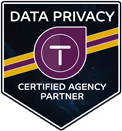Why your small business website needs an accessibility statement
An accessibility statement is a crucial component for any small business website. It doesn’t get as much attention as accessibility in general, but it’s still an essential component of overall ADA compliance. The purpose of an accessibility statement is to let potential customers know about your company’s commitment to meeting ADA requirements so that everyone can access your site, regardless of their disabilities.
In this post, we’ll discuss what an accessibility statement is and why it’s vital for small businesses to have one on their websites.
What is an accessibility statement?
One of the best things an accessibility statement does is provide customers with disabilities information on how they can access important content or buy products from you. In the U.S., it’s a requirement for websites to be ADA compliant. Although the laws are still somewhat vague, small businesses can avoid potential lawsuits and attract more customers by making their websites easier to access.
The idea behind ADA compliance stems from the 1990 Americans with Disabilities Act (ADA). However, today many more laws govern web pages. Website owners need to accommodate screen readers, so everyone has access – no matter how they interact online. Each new visitor needs an equal opportunity to access your site’s content while browsing through your company’s website. That includes making sure any critical content doesn’t rely heavily upon sound effects or descriptions for videos/images.
Your website may appear fine to those who visit it regularly, but you always need to consider visitors with disabilities? Small business owners should ensure their websites are ADA compliant by having an accessibility statement that tells visitors right away they can use the content in whatever way that best meets their needs.
How does an Accessibility Statement help my company brand?
Careful attention to the accessibility of your website and providing a written accessibility statement show your customers that you respect availability and access for all in regards to website content. It also offers potential customers with disabilities information regarding access to your content. Ultimately, it’s a positive representation of your company’s brand because it demonstrates a commitment to ease of access and social responsibility.
How do you write an accessibility statement?
Accessibility statements don’t need to be overly technical or long-winded. The notice should be short and concise but still, provide enough information for people with disabilities to know what they can expect from your website. The following is an example of an excellent way to start an accessibility statement:
“Accessibility Statement by “Company Name”
This website uses best practices for web development to create a fully accessible experience.”…
Tips for writing an effective accessibility statement
Your accessibility statement should include your contact information if there is a problem accessing any of the content. Your contact information makes it easy for people to get in touch with you and offer feedback on how they experienced the website from their perspective.
Your accessibility statement should also explain what features can be used by individuals with disabilities so that they know what to expect from your website. For example, if you have an online store and some of the products are available in a large-print format, mention that on your accessibility statement. It makes it easier for people who need larger font sizes to find what they need.
When drafting an accessibility statement, keep things brief but informative – chances are few people will be reading the entire thing anyway! If you want information about creating a good accessibility statement, check out this accessibility generator from w3.org or this one from Nomensa. These accessibility statement generators are an excellent resource for helping your company draft the basics and help customize your company’s website.
Features your accessibility statement might address
- Large fonts or font controls (for those who need a larger font size)
- Audio captions (for when the audio track is off)
- Video transcripts (so people can read while they’re watching videos -these are also helpful for those with hearing impairments and make great searchable content!)
- Screen reader compatibility so that screen reader software can read the website’s content aloud for people with visual impairments
- Keyboard shortcuts so that keyboard users don’t have to use a mouse or other pointing device
- Significant Color contrast (for those who need to reduce eye strain)
How do you handle accessibility issues?
Occasionally, despite best efforts, there are parts of your website that fall outside of best ADA practices. Acknowledging these areas can help people understand the restrictions of your website.
Even if you point these issues out on your website, it doesn’t provide an excuse for inaccessibility. Recommendations for dealing with the inaccessibility and a roadmap for fixing the problem(s) need to be in your accessibility statement. The following is an example of an opening paragraph that addresses instances of inaccessible areas:
While “your website’s name” strives to follow the accepted guidelines and requirements for accessibility and usability, it’s not constantly possible to do so in all locations of the site.
The following features are not currently available:
- Visual tracking indicators, which would show where links and interactive elements improve navigation for those with visual impairments.
- Multiple language support, which would allow people who don’t speak English as their first language to use the website in their language
- Low-bandwidth loading options so that users on slow internet connections can load pages more quickly without sacrificing features or content quality …
- Let visitors with accessibility questions know how to contact you.
It’s essential to provide people with the capability to speak to your webmaster or website manager about specific accessibility problems they might be having. A primary contact email address works, or you can include text that states:
We are continually seeking out options that will bring all areas of our website up to the same degree of accessibility. In the meantime, should you experience any trouble accessing “your website,” please do not hesitate to call us.
Accessibility starts at the beginning.
As a website owner, building accessibility into your website projects at the beginning can save time, money, prevent lawsuits, and make your content available to a larger audience. The benefits that result from helping everyone involved are easy to see. Your accessibility statement is a crucial step to helping your valuable customers find what they’re looking for and enhancing their life experience.
If you need help making your small business website more accessible, contact Cooperata for help. We’ll be glad to discuss an accessibility plan or refer you to a resource for help.
Sources and Other Reading
- Is Your Small Business Website Accessibility-friendly?
- W3.org Accessibility Generator
- Nomensa Accessibility Generator
- Introduction to Web Accessibility
- Accessibility Wiki







